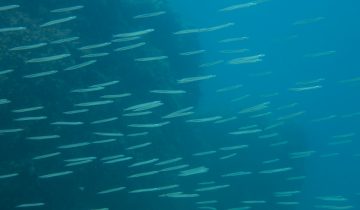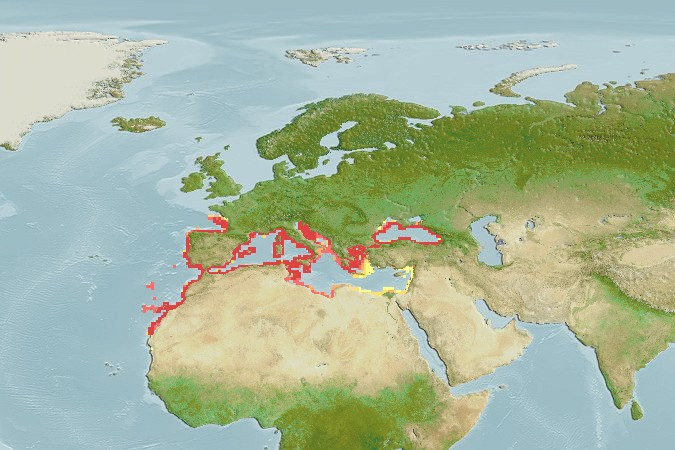Gymnammodytes cicerelus, commonly known as the sand eel, lesser sand eel, or barrinaire, is a marine fish species belonging to the family Ammodytidae within the order Perciformes. Its scientific name derives from the Greek ‘gymnos‘ (‘naked‘) and ‘ammodytes‘ (‘sand dweller‘), referring to its life buried in sandy substrates, while the epithet ‘cicerelus‘ comes from the Latin ‘cicer‘, meaning ‘chickpea‘, referencing its small size. It is widely distributed throughout the eastern Atlantic Ocean, from Portugal to Angola, including the Canary Islands, Cape Verde, the Mediterranean Sea, Adriatic Sea, Aegean Sea, and the Black Sea. It inhabits sandy or gravel bottoms, mainly in coastal areas of the continental shelf, where it digs burrows for protection and rest.
With a long and slender body, Gymnammodytes cicerelus reaches a maximum length of 17 cm, though the average is usually between 12 and 15 cm. It has a pointed head with a prominent and protrusible lower jaw, allowing it to capture prey efficiently. Its back displays greenish or golden tones, contrasting with a silvery belly that provides camouflage. It lacks spines in its fins: the dorsal fin has between 53 and 59 soft rays and the anal fin between 27 and 32. Pelvic fins are absent, scales are very small and cycloid, and the lateral line is branched with skin folds reaching the anus. It can be confused with Gymnammodytes semisquamatus, though the latter has a shorter ventrolateral fringe.
Gymnammodytes cicerelus is a carnivorous plankton feeder that mainly eats zooplankton, especially during the day when it swims in the water column searching for food. At night, it buries itself in the sediment where it remains hidden. Both adults and juveniles share these habits, contributing to their effectiveness as predators of small marine invertebrates. This behavior also helps them evade their own predators, which include larger fish, seabirds, and marine mammals.
The reproduction of Gymnammodytes cicerelus is oviparous, with demersal eggs that adhere to sand grains. Spawning occurs mostly in winter, when environmental conditions are more favorable. Larvae are pelagic and dominate the ichthyoplankton during the breeding season, giving them an important ecological role in early marine development stages. No parental care is provided after spawning, and the life cycle continues with larval dispersal.
This fish is of great fishing and culinary interest, especially in Mediterranean regions such as Catalonia, where it is highly appreciated fried. Along the Spanish Mediterranean coast, its catch can reach hundreds of tons annually. Ecologically, Gymnammodytes cicerelus acts as a key prey species for numerous predators, playing a fundamental role in the marine food chain. Additionally, its habit of digging in the sand helps oxygenate the substrate, promoting benthic biodiversity. Although it is not currently classified as threatened, its habitat is endangered by overfishing, coastal pollution, and seabed destruction caused by human activities.
Photos:


 from
from